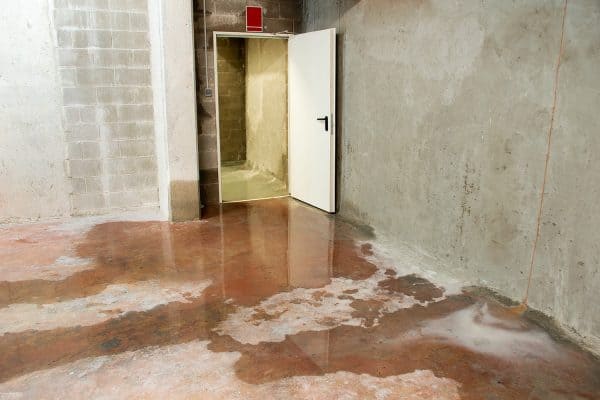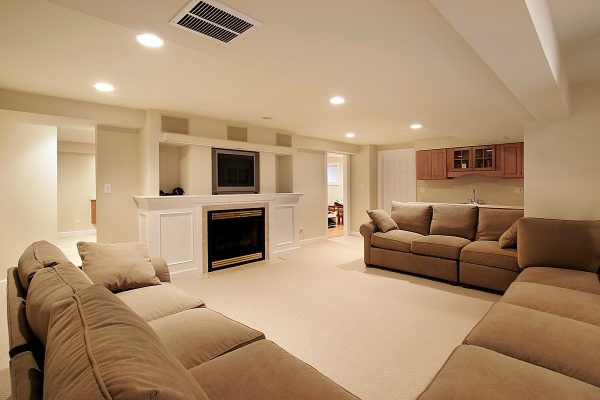Some people may not want to let other folks gain access to their attics. Hiding the attic access door is one way to hinder guests from entering that room. Now you’re wondering how you can hide an attic door in a wall. We researched the solution for you and here’s what we found.
Hiding an attic door in a wall is possible by concealing the fixture behind a mirror or a bookshelf. The steps to complete this project often depend on the item that hides the door.
Method #1: Hide the Door Behind a Mirror
- Mark the areas behind the full-length mirror’s frame for the sliding drawer brackets.
- Drill the marked locations and install the slide brackets.
- Attach and secure the other parts of the brackets onto the attic door.
- Mount the mirror and test its sliding mechanism.
Method #2: Hide the Door Behind a Bookshelf
- Attach the bookshelf's frame to the door's frame.
- Install Murphy door hinges to the top and bottom of the bookshelf.
- Assemble and secure the other parts of the Murphy door hinges into the bookshelf’s frame.
- Carry the bookshelf to its frame, ensuring that the parts of the hinges align properly.
- Swing the bookshelf to test its swinging capabilities.
Homeowners should assess the locations of their attic doors before proceeding with either method. Continue reading as we talk about these ways to hide attic doors in walls in greater detail. We’ll also tackle some precautions to help you prepare for these tasks.

How Do You Hide An Attic Door In A Wall?
Homeowners have different options to hide their attic access doors in their houses’ walls. But take note that the procedures noted in this section assume that the house already has an attic entry door in a wall. In other words, we left out the door installation process.

We may include affiliate links and curated AI content to highlight top design styles.
Now, here are some ways to conceal an attic door:
Method #1: Hide the Door Behind a Mirror
The first step in this DIY project is to purchase a full-length mirror that can hide the attic door effectively. So if the average door has 80 x 36-inch dimensions (length x width), you’ll need a full-length mirror that can cover most of the fixture.
But take note that the typical full-length mirror only has a length of about 72 inches. You can get away with hiding the eight inches with your choice of interior décor. If the mirror is narrower than the door’s width, you may get away with hiding the door by adding treatments.
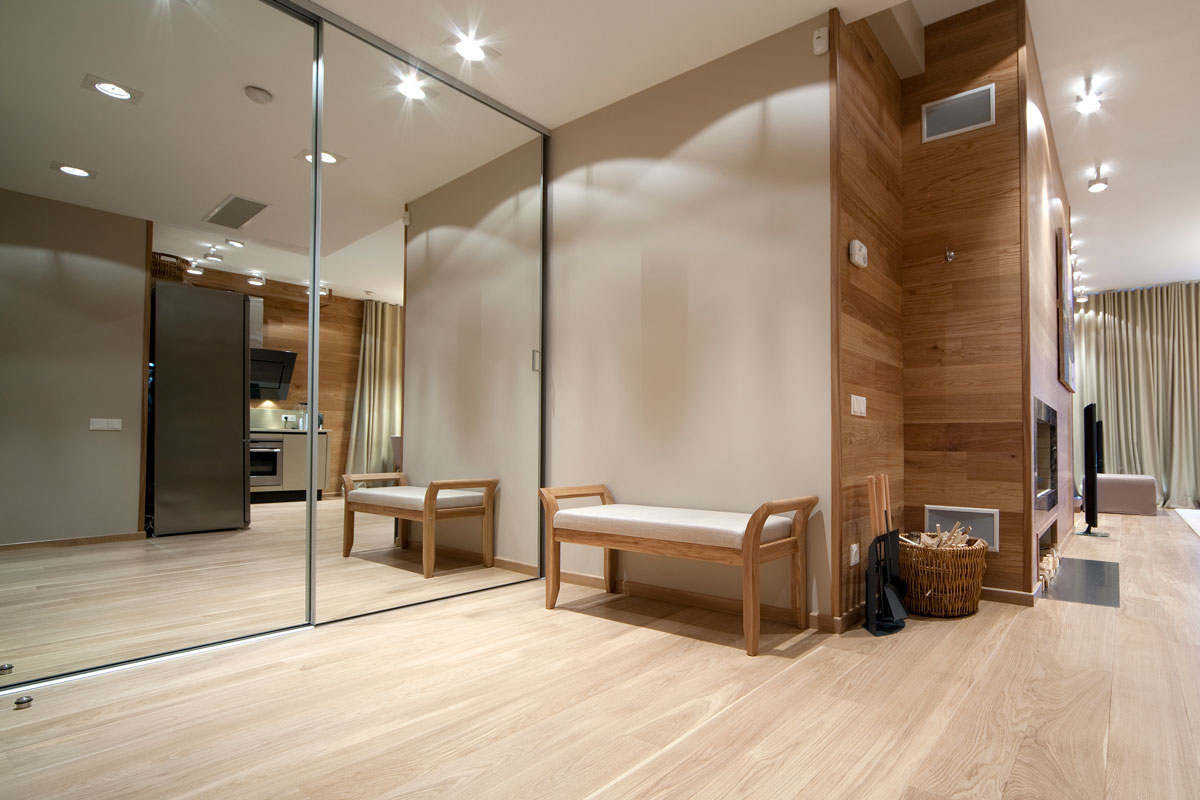
After making your plan, you can proceed with this project by following these steps:
What You’ll Need
- Full-length mirror
- 2 x drawer slides
- Measuring tape
- Power drill
- Screwdriver
- Screws
Step-by-Step Guide
1. Carefully place the full-length mirror on a long, flat, and level surface with the glass facing down. 2. Measure the frame and mark the areas where the screw holes for the drawer slides will go. 3. Place a drawer slide bracket onto the mirror's frame and drill holes in the marked locations. 4. Screw the bracket in place. 5. Repeat steps 2 to 4 for the other bracket. 6. Attach and secure the other drawer slide brackets onto the door. Ensure that the space is equal to the distance between the two brackets on the mirror’s frame. 7. Mount the mirror onto the attic door and test if it slides properly.
Check out this 70-inch tall full-length mirror on Amazon.
Take note that the mirror should have proper clearance for it to slide out of the way. This means that this method may not work if the attic door is in a fairly tight corridor.
The video below can act as a guide to help you complete this project. Keep in mind that the clip shows how to hide a door behind a mirror for a hiding place. But the steps highlighted by the person in the video should work similarly in concealing an attic entry door.
Method #2: Hide the Door Behind a Bookshelf

You need to have a bookshelf that fits inside the attic door’s frame. If you can’t find a bookcase that fits, you may need to have one built before continuing this project.
Also, you don’t need the attic door for this procedure. So you can remove the door and the jamb from the construction.
Another thing to note is that the bookshelf needs to sit on a level surface. Use a level to if the area for your hidden attic door is reasonably flat. If not, add a piece of poplar to help fill the gap. Glue the poplar underneath the bookshelf.
It’s important to do these preparations before proceeding with the rest of this project. Otherwise, it can be difficult to fix the slant after completing the installation. You may also need an assistant to help with lifting and carrying the bookcase to the installation location.
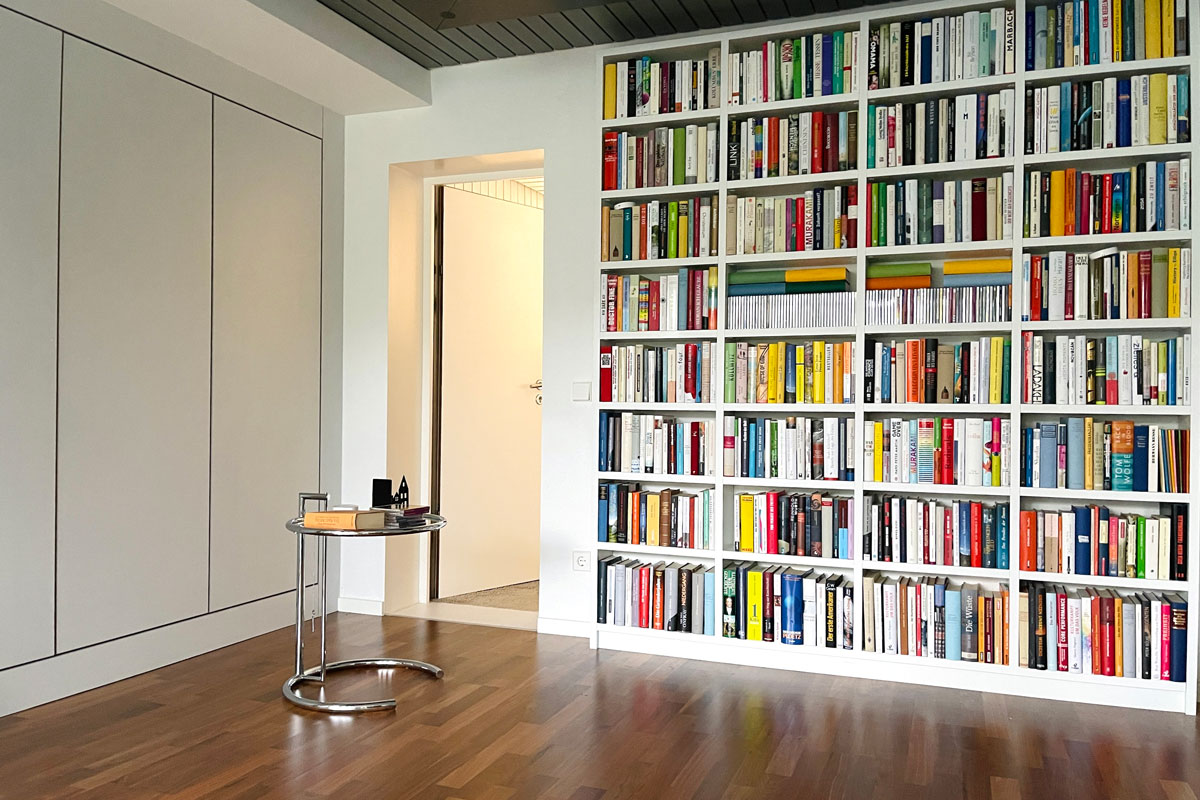
Once you have your bookshelf prepared, follow these steps to complete the assembly:
What You’ll Need
- Murphy door hinge set
- Bookshelf
- Screwdriver
- Screws
- Wood glue
Step-by-Step Guide
- Install the bookshelf’s frame into the door’s frame. Plumb the gaps with wooden shims if necessary.
- Attach a pair of Murphy door hinges to the top and bottom of the bookshelf.
- Assemble and secure the other parts of the Murphy door hinge set to the bookshelf’s frame.
- With the help of your assistant, carry the bookshelf to the door frame. Make sure that the two parts of the Murphy door hinges align.
- Secure the Murphy door hinges and test if the bookshelf swings properly.
- Apply wood glue to the door frame and reinstall its casing.
Check out this bookshelf on Amazon.
Watch this video if you want to see a visual representation of the steps mentioned above:
We also have a guide on how to hide an unused doorway that you can read if you find it interesting to learn about this related topic.
How Do You Install An Attic Access Door In A Wall?
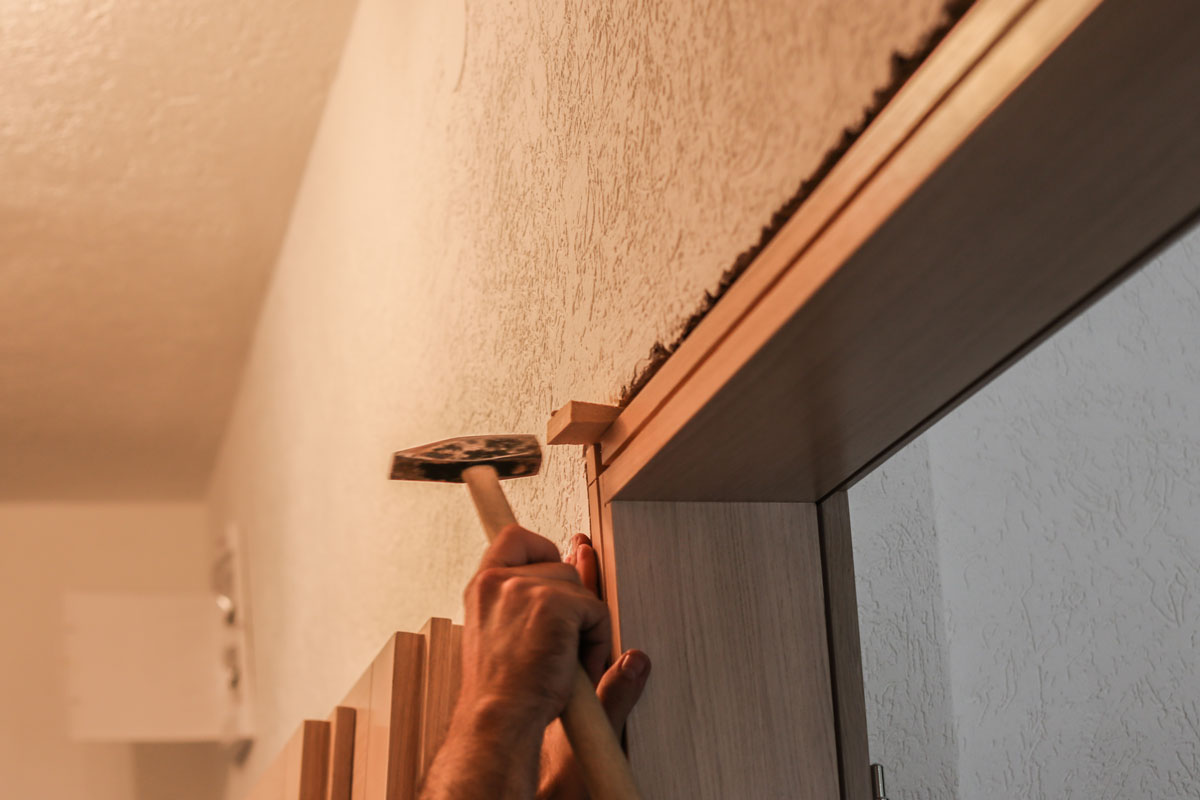
The following steps will help guide you in installing a door in the wall that leads to your attic. However, this process assumes that you already have an open space to install the door. Otherwise, create the door opening first before proceeding with this project.
What You’ll Need
- Solid core door
- Level
- Square
- Screws
- Drill
- Shims
- Screwdriver
- Power drill with a countersink bit
- Tape measure
Step-by-Step Guide
- Ensure that the jamb is both plumb and level. If not, adjust the door jamb by placing shims.
- Place the door into the opening.
- Use the power drill with the countersink bit to create three holes in both the hinge and latch sides of the door’s casing.
- Place screws into the holes but don’t tighten them yet.
- Fill the gaps with shims to ensure the placement is plumb and level. Use the square to check the level of the door’s assembly if necessary.
- Tighten the screws and trim the shims.
- Test the door if it functions properly.
Check out this solid core door on Amazon.
You can also watch the video below to see the steps mentioned above in action:
Are you also wondering if new houses have attics? If so, read our post on that topic to learn the answer.
How Much Does It Cost To Install An Attic Ladder Or Stairs?
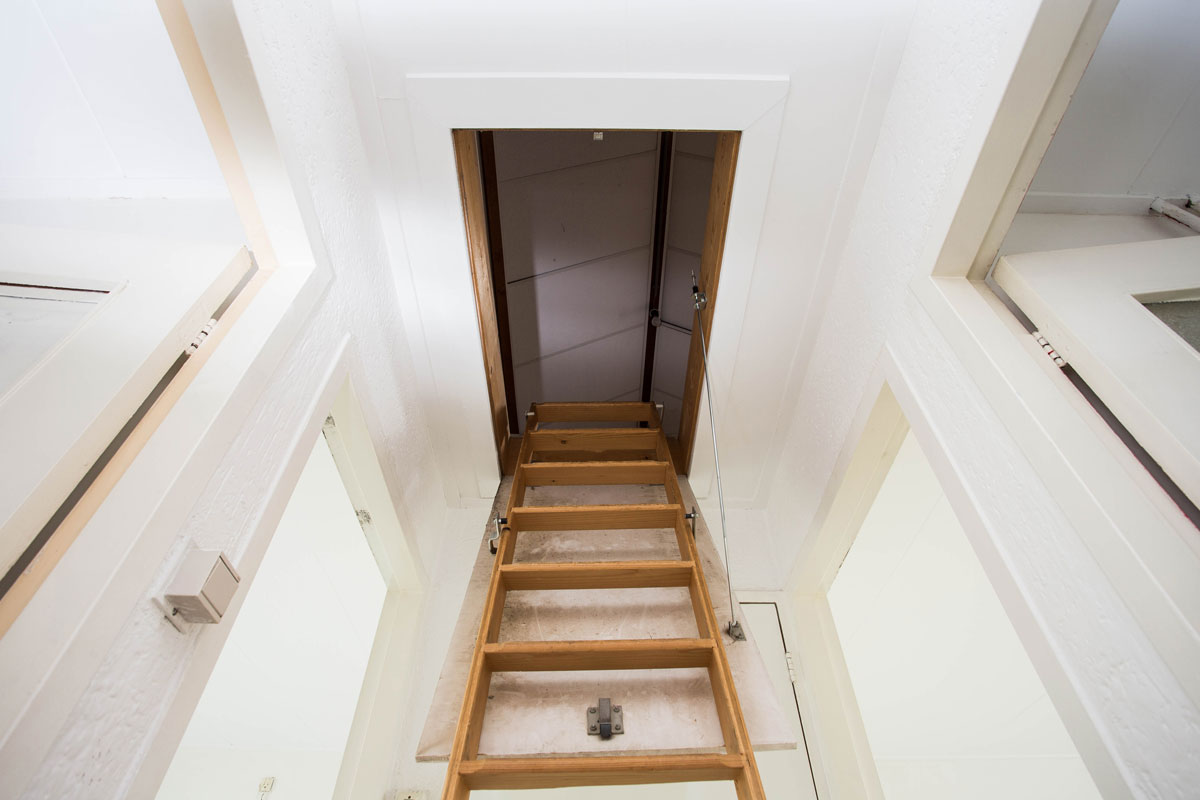
Installing a ladder or a flight of stairs that leads to the attic typically costs about $220 to $647. Some professionals charge per project, while other technicians may price their services by the hour. The cost per project is usually $240 on average. On the other hand, certain experts may charge approximately $60 to install these fixtures.
Keep in mind that the overhead can increase if additional parts and services are necessary. For example, expect to pay an extra $3.50 per linear foot to install trim. Homeowners that want to paint the area may also have to spend an extra $0.50 per square foot.
Should I Leave My Attic Door Open?
It’s not ideal for keeping an attic door open for extended periods. Homeowners may want to keep their attic doors closed even if proper ventilation and air-conditioning exist. Leaving this door open may allow pests to enter the rest of the house from the attic.
Final Words

Hiding an attic door installed in a wall is possible with the help of other household items. Homeowners may choose things like full-length mirrors or bookshelves to hide their attic entry doors. But make sure that the passageway to that space already exists to reduce the effort and costs required for the project.





